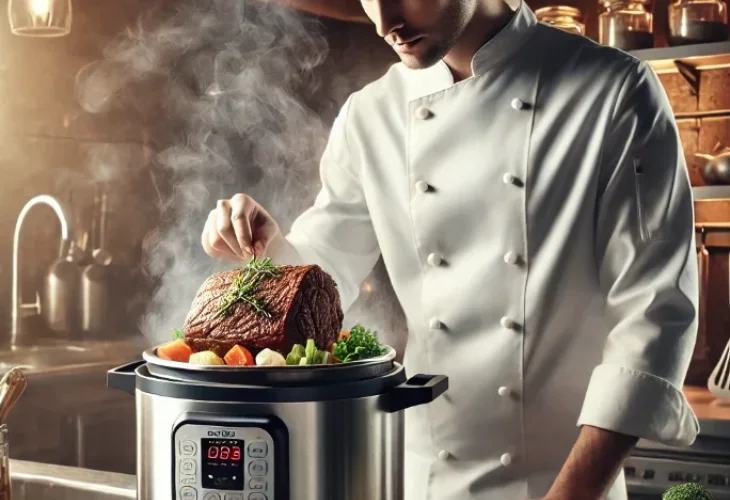Ingenious Method: Chefs' Shortcut for Long-Cooked Meat
Discover how top chefs prepare long-cooked meat in less time with a genius technique you can also adopt.

Long cooking is a well-known technique for achieving tender, juicy, and flavorful meat. However, it requires a lot of time and doesn't always fit the modern lifestyle. Leading chefs, seeking efficient solutions without compromising quality, have developed an ingenious method that allows for similar results to long cooking, but in a shorter time frame.
The method is based on alternating between high heat and quick steaming, which softens the meat and preserves the deep flavors typically yielded by slow cooking. Its major advantage lies in its ability to leverage the meat's structure and cooking rules to save hours of work without affecting the result.
Steps to Prepare According to the Method
1. Prepare the Meat
Start by selecting cuts suitable for long cooking, such as shoulder, brisket, or ribs. Cut the meat into medium cubes, wash it well, and dry with a paper towel.
2. Searing the Meat
In a wide and deep pot, heat a little oil over high heat. Sear the meat on all sides until a golden crust forms. This step is crucial as it "locks" the flavors inside the meat, giving it depth.
3. Adding Liquids
After searing, add liquids to the pot - beef stock, red wine, or a mix of water and spices. The amount should cover the meat halfway to ensure concentrated steaming without diluting the flavors.
4. Combination of High Heat and Steaming
This is the heart of the method:
- Set the heat to medium-high to bring the liquids to a quick boil.
- Once boiling, cover the pot with a tight lid and lower the heat.
- The steam creates a moist and warm environment that quickly tenderizes the meat.
5. Smart Seasoning
Add fresh herbs such as rosemary or thyme, crushed garlic, and vegetables like carrots, onions, and celery. The rich seasoning enhances the depth of flavors, while the cooking process turns the sauce thick and velvety.
6. Intermittent Cooking
During cooking, open the lid every 20 minutes and stir the dish. This action allows the liquids to be distributed evenly and for the meat to absorb flavors from all sides.
7. Using Smart Devices
Professional chefs have an advantage in using modern tools, such as pressure cookers or sous-vide machines, which accelerate the cooking process and achieve perfect tenderness in a particularly short time.
Why Does It Work?
The method takes advantage of the properties of proteins and fats in the meat. The searing process creates an outer crust that retains juiciness, while the steaming with liquids softens the tough parts. Rapid temperature changes cause the meat fibers to quickly relax, preventing it from drying out or falling apart.

